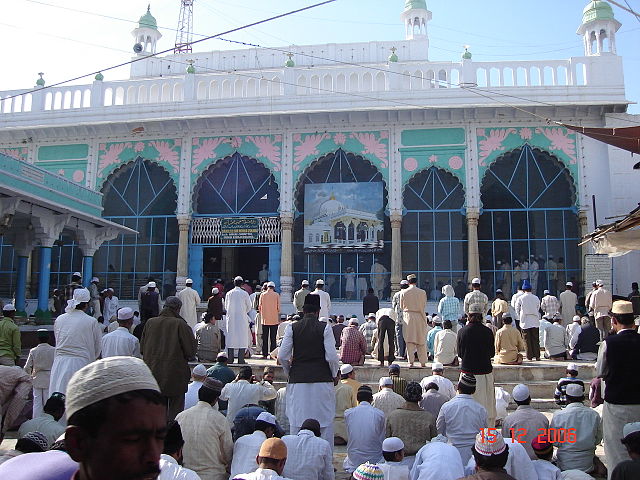Dargah Ajmer Sharif is one of the most sacred Muslim sites in the whole world. That’s because it’s home to the tomb of the famous Khwaja Moin-ud-din Chisti, also known as the ‘Protector of the Poor’ (Gharib Nawaz), who spent his entire life comforting and assisting the poor and underprivileged.
Getting to Dargah Ajmer Sharif
The shrine is located in Ajmer, which lies about 135 kilometres (or two hours’ drive) west of Jaipur and 390 kilometres (or nine hours’ drive) from Delhi. A major rail line connects these three cities, as well as Ahmedabad and Mumbai. If you’re travelling in Delhi and would rather avoid a long ride, you can catch a plane to Jaipur and take a train or bus from there.
Once you’re in Ajmer, you can choose to travel around by taxi, rickshaw or tonga (a light horse-drawn carriage). Dargah Ajmer Sharif is not difficult to find – it’s right in the centre of town. If you need to pick up any supplies – from food to worship materials to handicrafts – before or after your visit, you won’t have any trouble. The shrine is surrounded by colourful markets, selling every item imaginable.
What to expect
Not only is Dargah Ajmer Sharif spiritually important, it’s also interesting from an architectural point of view. Mughal construction styles are the primary influence and the stunning Nizam Gate is one of the building’s most outstanding features. It was built in 1915, under the instruction of Mir Osman Ali Khan (the last Nizam of Hyderabad). Khwaja Moin-ud-din Chisti’s tomb is found within an internal chamber. Outside, a series of small portraits depict both him and disciple Qutb ud-Din Bakhtya Kaki.
When to go
Given Dargah Ajmer Sharif’s global significance, it’s busy pretty much all year round. If you’re not keen on crowds and don’t fancy negotiating your way around loads of people, your best bet is to visit in the evening. Don’t expect things to be utterly tranquil, but do expect them to be quieter than during the day.
In contrast, if you’re hoping to maximise people watching opportunities and experience being a part of something much bigger than yourself, you should definitely plan your trip during the annual Urs Festival. Every year, in the seventh month of the Islamic lunar calendar, hundreds of thousands of Muslims make the pilgrimage to Dargah Ajmer Sharif. Drumming, praying and brilliant, coloured cloths take over the streets. Some of the most well-known of the pilgrims are the Qualanders or Kalanders – ascetic sufis who walk all the way to Khwaja Moin-ud-din Chisti’s shrine from Delhi (every single one of the 390 kilometres).
Where to stay
It’s usually a really good idea to reserve accommodation in advance – especially during the Urs Festival. The atmosphere can become rather chaotic, so do consider spending your stay in an Ajmer Hotel. That way, you’ll have a tranquil oasis to escape to, where you can find refuge from the crowds, and enjoy the convenience of high-end facilities, like luxurious spas, fully-equipped gyms, on-site restaurants and spacious rooms.













